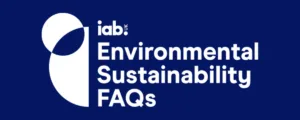By Zoe Bruton, Senior Account Manager at A Million Ads
During the physical disconnect over the last year, work and personal calls have shown us the importance of voice in offering us emotional connections. The question is, how does this transcend into the audio advertising space and, more importantly, do we need to press pause on audio ads as we know them?
The amount of data we have at our disposal is only set to increase. Data that can be used for advertising is growing exponentially and the IDC predicts that by 2025 we will have reached a total of 175 zettabytes of data available in the world. Data allows us to understand consumer behaviour, context and preferences. Digital media is essentially the advertising alternative to the pot of gold at the end of a rainbow; it gives us the gold coins to make personally relevant ads which leverage the available data.
Digital audio is no exception. The growth of UK smart speaker consumption has skyrocketed by 4x over the last three years, meaning that voice activation has become mainstream in our culture. With that comes the opportunity for actionable audio ads. Charlie Cadbury, CEO and Founder of Say it Now, stated, “Once people try purchases through smart speakers, they realise that it’s very much like making any other transaction through Amazon. You make your first voice purchase, you get receipts, you trust the system and you are more susceptible to other integrations and other purchases.” As consumer trust in smart speaker shopping grows, brands need to move fast to capitalise on the opportunity.
While we are used to creating ad creatives for the audio landscape, it is vital that listeners are interacting with the ad, rather than just passively listening. A great example of this is the actionable audio ad for Berocca Boost, a partnership with Say It Now, A Million Ads, Bayer, MullenLowe and Mediacom. The campaign is an audio ad with the same type of attribution as other media channels: engagement and transaction.
Ross Marshall, Group Account Director at MullenLowe, said “Brands need to be looking in this space and working out what they can do and when adopting new formats, creative teams need to be prepared for an iterative process that evolves with advances in the medium. Personalising the creative resulted in better listener engagement, with a 20% increase in the listeners opening the smart speaker ad (generic vs personalised ad).
Emulate the personal touch
The pandemic has shown advertisers the need for personal connections and offered an opportunity to speak to consumers on a one-to-one basis. Media agencies have a huge role to play when aiding brands in navigating consumer rhythms. Lawrence Dodds, Communications Director at UM London, believes that there is a need for brands to step forward and understand their listeners, because “consumers do not care about brands… brands need to understand the mindset of the consumers as well as moments of their day”. This is not to say that consumers do not have a sense of loyalty to certain brands, but this is greatly increased when brands can tap into the mind of the consumer on a personal level.”
Lawrence goes on to describe audio as “the missing tissue that allows you to connect those opportunities that perhaps we couldn’t go for or had limited media options to before”. Reflecting on the increased digital audio listenership and understanding how consumers are now using the medium differently gives brands the opportunity to use the channel across the entire marketing funnel.
News flash: Programmatic activity can be personalised effectively
Like it or not, programmatic is here to stay. Emma Jensen, Programmatic Director and trailblazer at Digitas, describes how the changing ‘binge listening environment’ (aka the audio landscape) is allowing brands to be more accessible to consumers than ever due to the lower price point of audio hardware and plethora of streaming services. “There is a need for dynamic partners to be involved in programmatic strategy because it enables a more personalised message which allows brands to better connect with the consumer and form stronger relationships with them.”
Listen to your audience
With the growing momentum of podcasting, vast content available and wide audiences, advertisers need to take this into consideration when creating ads for the medium, as there is an obvious desire and appreciation for the medium itself within the wider channel mix. The Kantar Media Reaction Report 2020 predicts that podcast ad revenue is expected to grow by a whopping 36% growth in 2021. Yet, without a creative that is relevant to your audience, putting your pennies in the medium does not guarantee an output.
Having a podcast host in your pocket creates a deeper trust between yourself and the talent and in advertising terms, creates invaluable trust between the brand and the consumer. Podcast talent can also be used to deliver dynamic host read ads which are constantly changing to adapt to the consumer’s environment and preferences.
So how do we stay on top of the ever-changing environment? The key is to keep actively listening to content, insights and audiences. You can’t expect consumers to listen to your brand if you are not listening to them. Digital audio is offering us more data than ever before, and technological advances are giving us more opportunities for innovation. If you are not taking this into consideration, then it’s time to press pause on those ads!
*A Million Ads is a client of Bluestripe Communications, owned by Bluestripe Group, the owner of NDA.









